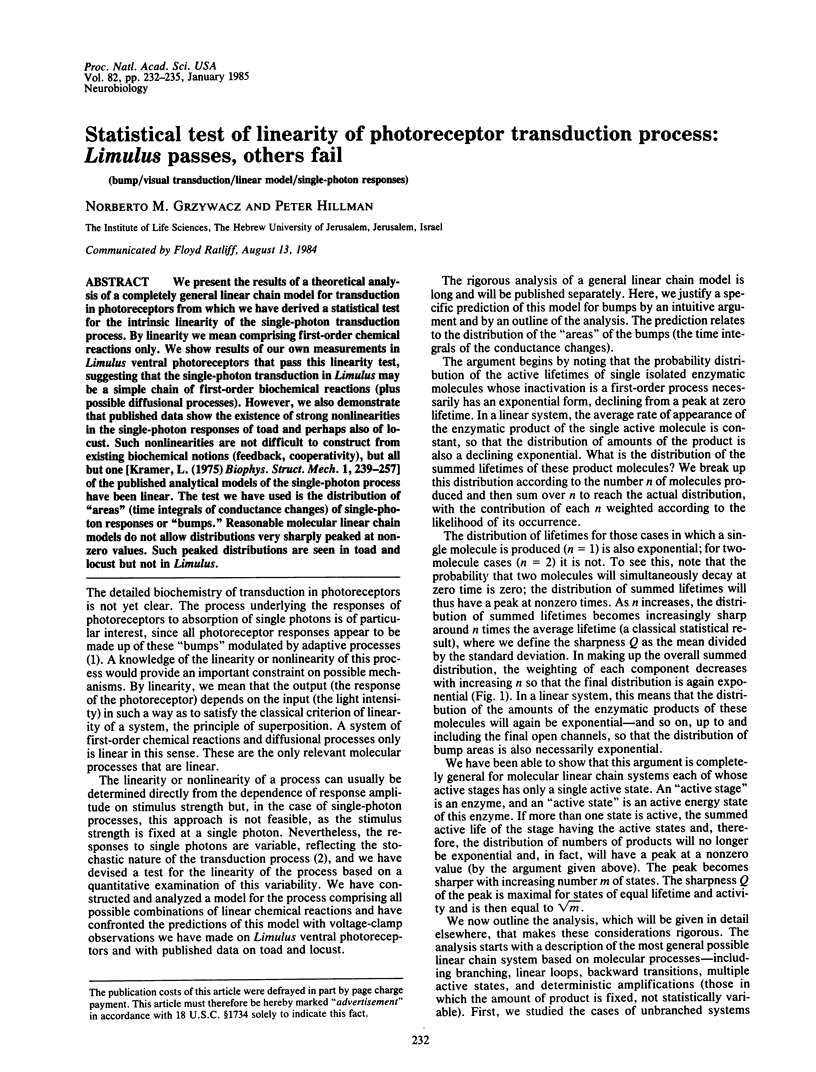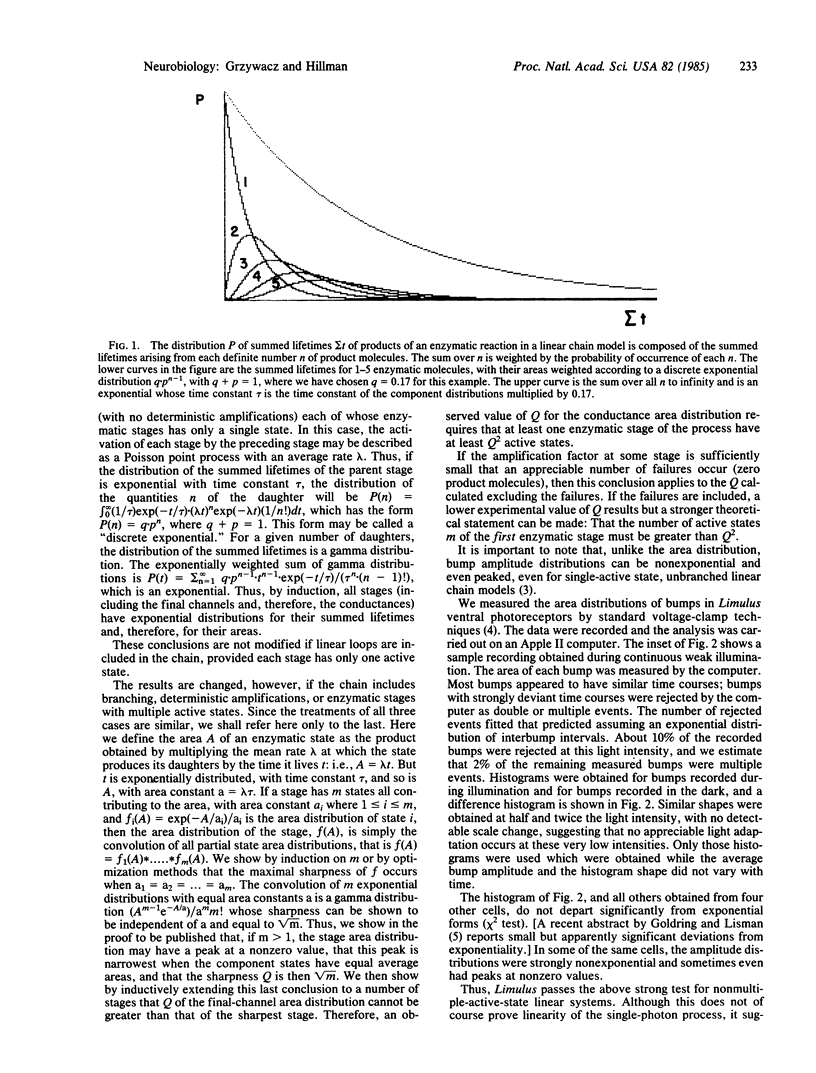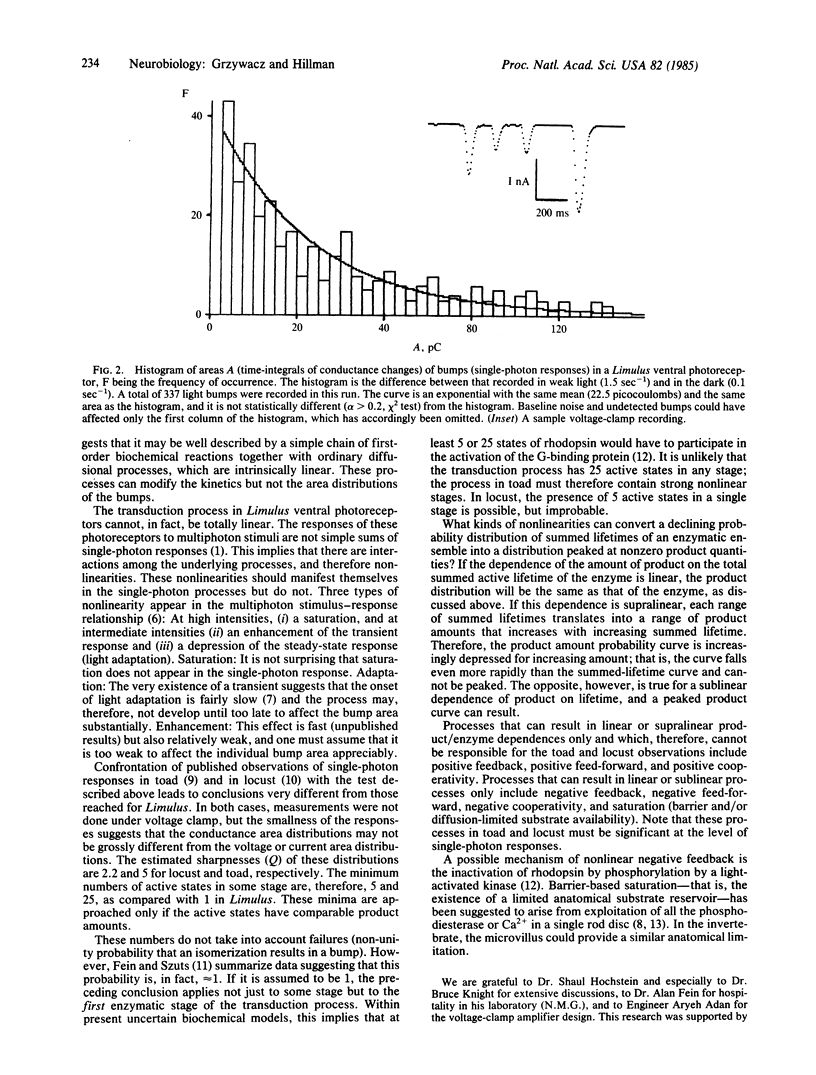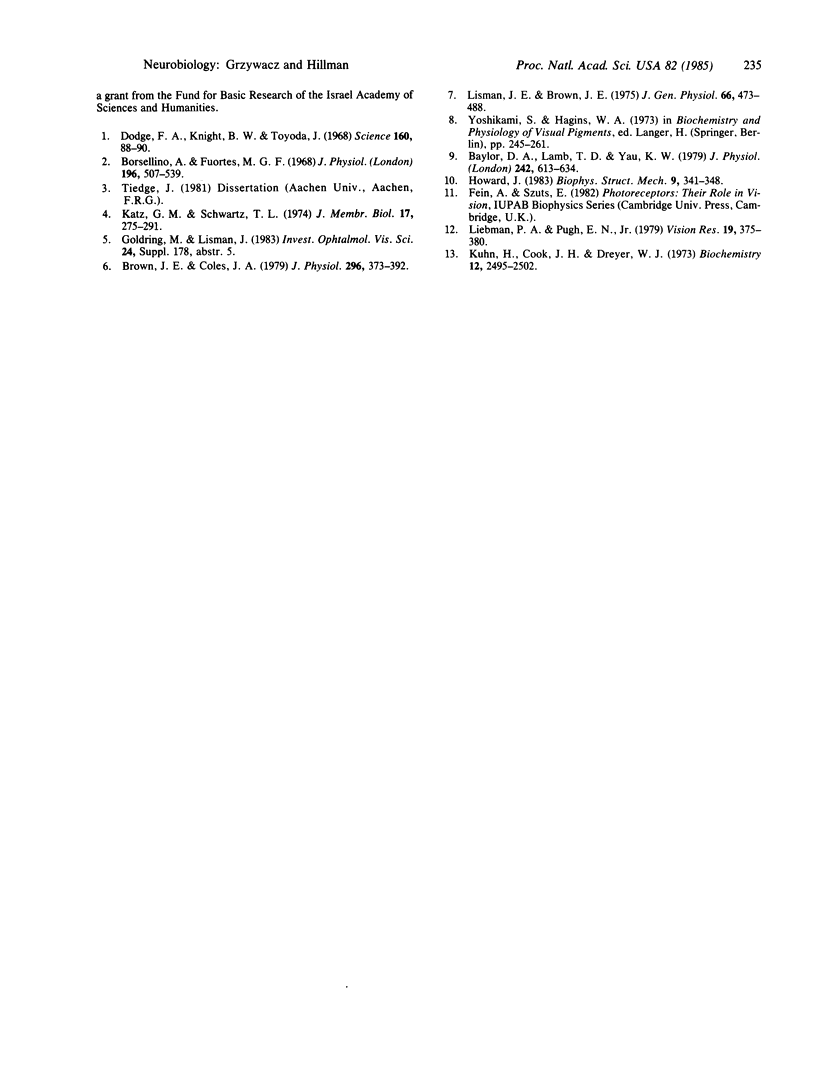Abstract
We present the results of a theoretical analysis of a completely general linear chain model for transduction in photoreceptors from which we have derived a statistical test for the intrinsic linearity of the single-photon transduction process. By linearity we mean comprising first-order chemical reactions only. We show results of our own measurements in Limulus ventral photoreceptors that pass this linearity test, suggesting that the single-photon transduction in Limulus may be a simple chain of first-order biochemical reactions (plus possible diffusional processes). However, we also demonstrate that published data show the existence of strong nonlinearities in the single-photon responses of toad and perhaps also of locust. Such nonlinearities are not difficult to construct from existing biochemical notions (feedback, cooperativity), but all but one [Kramer, L. (1975) Biophys. Struct. Mech. 1,239-257] of the published analytical models of the single-photon process have been linear. The test we have used is the distribution of "areas" (time integrals of conductance changes) of single-photon responses or "bumps." Reasonable molecular linear chain models do not allow distributions very sharply peaked at non-zero values. Such peaked distributions are seen in toad and locust but not in Limulus.
Full text
PDF



Selected References
These references are in PubMed. This may not be the complete list of references from this article.
- Baylor D. A., Lamb T. D., Yau K. W. Responses of retinal rods to single photons. J Physiol. 1979 Mar;288:613–634. [PMC free article] [PubMed] [Google Scholar]
- Borsellino A., Fuortes M. G. Responses to single photons in virual cells of limulus. J Physiol. 1968 Jun;196(3):507–539. doi: 10.1113/jphysiol.1968.sp008521. [DOI] [PMC free article] [PubMed] [Google Scholar]
- Brown J. E., Coles J. A. Saturation of the response to light in Limulus ventral photoreceptor. J Physiol. 1979 Nov;296:373–392. doi: 10.1113/jphysiol.1979.sp013011. [DOI] [PMC free article] [PubMed] [Google Scholar]
- Dodge F. A., Jr, Knight B. W., Toyoda J. Voltage noise in Limulus visual cells. Science. 1968 Apr 5;160(3823):88–90. doi: 10.1126/science.160.3823.88. [DOI] [PubMed] [Google Scholar]
- Katz G. M., Schwartz T. L. Temporal control of voltage-clamped membranes: an examination of principles. J Membr Biol. 1974 Jul 12;17(3):275–291. doi: 10.1007/BF01870188. [DOI] [PubMed] [Google Scholar]
- Kühn H., Cook J. H., Dreyer W. J. Phosphorylation of rhodopsin in bovine photoreceptor membranes. A dark reaction after illumination. Biochemistry. 1973 Jun 19;12(13):2495–2502. doi: 10.1021/bi00737a020. [DOI] [PubMed] [Google Scholar]
- Liebman P. A., Pugh E. N., Jr The control of phosphodiesterase in rod disk membranes: kinetics, possible mechanisms and significance for vision. Vision Res. 1979;19(4):375–380. doi: 10.1016/0042-6989(79)90097-x. [DOI] [PubMed] [Google Scholar]
- Lisman J. E., Brown J. E. Light-induced changes of sensitivity in Limulus ventral photoreceptors. J Gen Physiol. 1975 Oct;66(4):473–488. doi: 10.1085/jgp.66.4.473. [DOI] [PMC free article] [PubMed] [Google Scholar]


